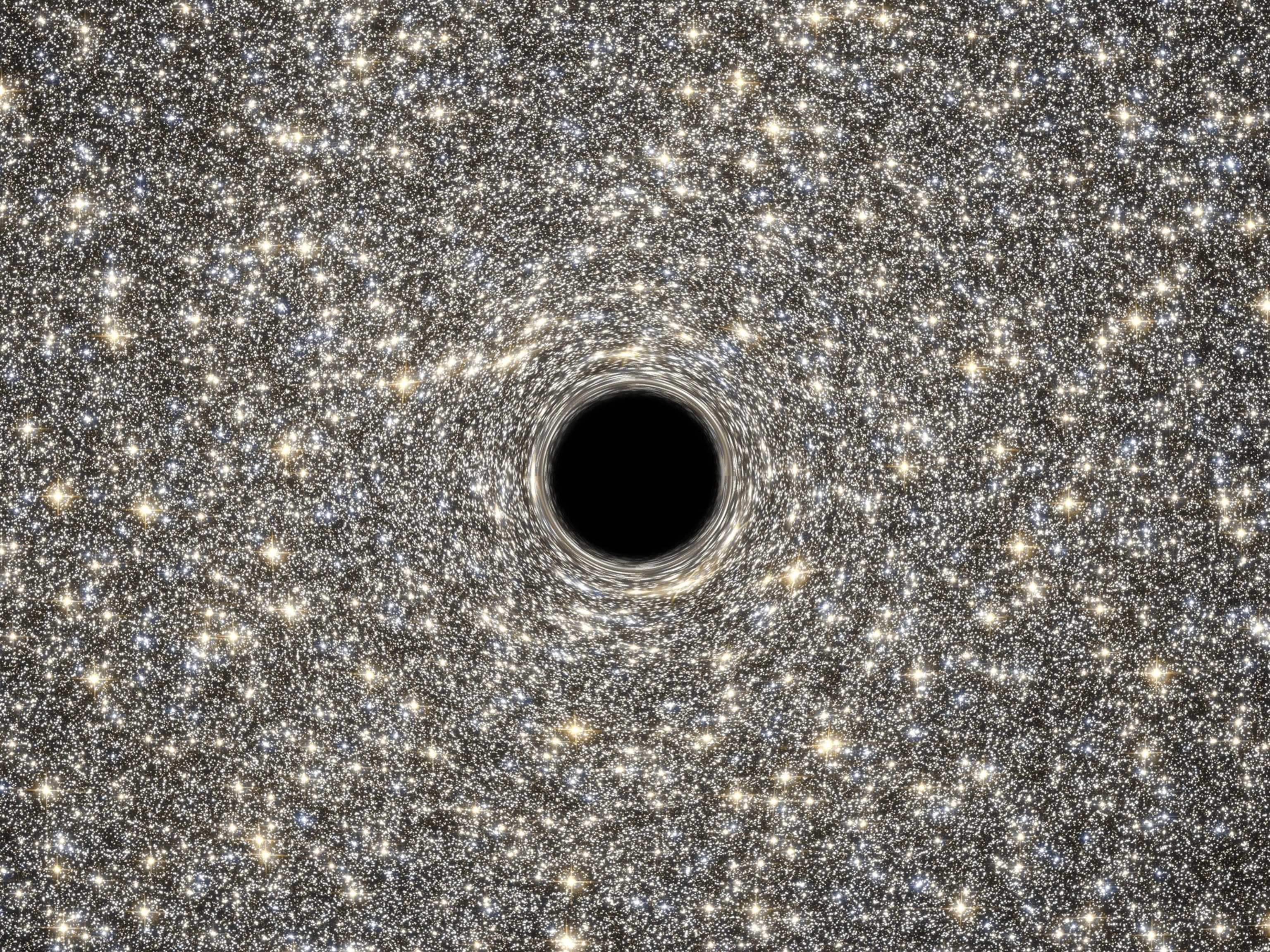
"Comets" Found Orbiting Monster Black Hole
Ghostly, comet-shaped clouds of gas have been spotted orbiting near the mouth of a supermassive black hole, a new study says.
Ghostly "comets" have been found orbiting near the mouth of a supermassive black hole, a new study says.
A team of European and U.S. astronomers recently used Japan's Suzaku space telescope to study radiation pouring out of a black hole that's ten million times the mass of our sun. This monster black hole sits at the core of the spiral galaxy NGC 1365, 56 million light-years from Earth.
Thanks to a fortuitous alignment of the space telescope and the black hole, astronomers were able to detect weird, comet-shaped clouds orbiting close to the black hole at breakneck speeds of thousands of miles a second.
"Unlike mountain-size icy comets found in our solar system, the ones we are seeing are made of stellar-size, superhot gaseous remains of stars ripped apart by black holes," said study co-author James Reeves of Keele University in the U.K.
The unusual discovery suggests that all supermassive black holes might have comet-like clouds, which may change how astronomers model the way these cosmic predators devour their stellar prey, the study authors say.
"Comets" Seen Eclipsing the Black Hole
Matter is constantly falling into the supermassive black holes at the centers of galaxies, forming what are called accretion disks of superhot material that orbit the black holes.
A jet of high-energy particles streaming from the mouth of the black hole creates a bright point of light as seen by Suzaku's x-ray eye.
Similar to the way the moon blots out sunlight during a solar eclipse, the orbiting clouds darkened the team's x-ray readings as they passed between Earth and the central black hole in NGC 1365.
(Related pictures: "'Fossil' Fireballs Found in Supernova Debris.")
The team knew such clouds should exist—but since they'd never been detected in this way before, the clouds' exact shapes had been a mystery.
"After an initial dramatic drop in the x-ray emissions, we saw a gradual brightening occur as we observed father and farther out into the cloud's tail, hinting to us of its cometary shape," Reeves said.
The clouds orbit the black hole at roughly ten thousand times the distance between Earth and the sun, the team found.
The "head" of each cloud is about the size of sun, the scientists say, while the cometary tails stretch more than 93 million miles (150 million kilometers).
Swarm of Comet-like Clouds
At the rate the black hole is consuming material, the astronomers think the bizarre "comets" may live for only a few months. The scientists suspect, however, that the black hole has a continuous supply of doomed stars to replenish its orbiting clouds.
Also, even though the team saw just two clouds orbiting NGC 1365's black hole, they think there's actually a swarm of them around the object.
"Because we can detect only a handful of the comets that happen to intersect our line of sight, we think there may actually be upwards of ten million of these peculiar clouds swarming around at any one time," Reeves said.
"It's turning out these black holes are even more chaotic than we ever thought."
The black hole's orbiting "comets" are described in a paper published online May 19 on the arXiv website. The paper has been accepted for publication in the journal Astronomy and Astrophysics.





